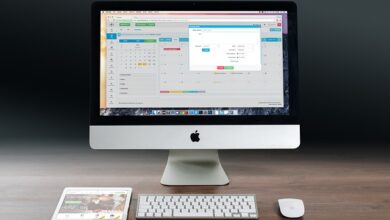How to Make Extra Income with Print-on-Demand

In today’s digital age, there are countless opportunities to generate extra income without needing a massive upfront investment or years of experience. One such opportunity is print-on-demand (POD) —a business model that allows you to create and sell custom designs on products like t-shirts, mugs, phone cases, and more, without holding any inventory. With POD, you can turn your creativity into cash while leveraging the power of e-commerce platforms and automation.
In this guide, we’ll walk you through everything you need to know about making extra income with print-on-demand, from understanding the basics to scaling your business for long-term success.
What Is Print-on-Demand?
Print-on-demand is a business model where you design products (such as apparel, home decor, or accessories) and partner with a POD service provider to handle production, shipping, and fulfillment. Here’s how it works:
- Design Creation : You create unique designs using graphic design tools.
- Product Selection : Choose the types of products you want to sell (e.g., t-shirts, hoodies, tote bags).
- Upload to POD Platform : Partner with a POD platform to upload your designs and list your products for sale.
- Customer Purchase : When someone buys your product, the POD provider prints, packages, and ships it directly to the customer.
- Profit : You earn the difference between the selling price and the cost charged by the POD provider.
The beauty of POD lies in its simplicity: you don’t need to invest in inventory, manage logistics, or worry about unsold stock. It’s an ideal side hustle for creatives, entrepreneurs, and anyone looking to make extra money online.
Why Choose Print-on-Demand?
Before diving into the “how,” let’s explore why print-on-demand is such a popular choice for generating extra income:
1. Low Startup Costs
Unlike traditional retail businesses, POD requires minimal upfront investment. Most platforms offer free accounts, and you only pay when a customer places an order.
2. No Inventory Management
You don’t need to store products or worry about overstocking. The POD provider handles all manufacturing and shipping.
3. Flexibility
You can run your POD business part-time alongside your day job, making it perfect for earning extra income.
4. Creative Freedom
Whether you’re a graphic designer, illustrator, or hobbyist, POD lets you express your creativity and build a brand around your unique style.
5. Scalability
As your business grows, you can expand your product range, target new audiences, and even outsource tasks like marketing.
Step-by-Step Guide to Making Extra Income with Print-on-Demand
Ready to get started? Follow these steps to launch your own print-on-demand business and start earning extra income.
1. Choose Your Niche
The first step is deciding what type of products and designs you’ll focus on. A well-defined niche helps you stand out in a crowded market and attract a specific audience. Consider the following:
- Interests and Passions : What topics or themes excite you? Examples include fitness, travel, pets, gaming, or motivational quotes.
- Trends : Research trending topics on social media platforms like TikTok, Pinterest, and Instagram.
- Target Audience : Who are you designing for? For example, college students, parents, or professionals.
Pro Tip : Start small and test different niches to see what resonates with customers before committing to one.
2. Create Eye-Catching Designs
Your designs are the heart of your POD business. They should be visually appealing, relevant to your niche, and aligned with your target audience’s preferences. Here’s how to create winning designs:
- Use Design Tools : Platforms like Canva, Adobe Illustrator, or Photoshop are great for creating professional-looking designs. If you’re not a designer, consider hiring freelancers on Fiverr or Upwork.
- Keep It Simple : Avoid cluttered designs; clean, bold visuals tend to perform better.
- Add Value : Incorporate humor, inspiration, or practicality into your designs to make them memorable.
Example : A funny cat-themed mug design could appeal to pet lovers, while a minimalist quote poster might attract interior design enthusiasts.
3. Select a Print-on-Demand Platform
Choosing the right POD platform is crucial for your business’s success. Here are some of the most popular options:
- Printful : Offers a wide range of products and integrates seamlessly with Shopify, Etsy, and WooCommerce.
- Printify : Provides competitive pricing and access to multiple printing partners.
- Redbubble : Ideal for beginners, as it handles listing and sales but takes a larger commission.
- Teespring : Focuses on apparel and offers built-in marketing tools.
- Zazzle : Great for customizable gifts and home decor items.
Each platform has its pros and cons, so research their fees, product quality, and customer support before making a decision.
4. Set Up Your Online Store
Once you’ve chosen a POD platform, it’s time to set up your store. You have several options:
- Etsy : Perfect for handmade and personalized products, Etsy attracts buyers looking for unique items.
- Shopify : Build a fully branded e-commerce store with complete control over branding and pricing.
- Social Media : Use platforms like Instagram or Facebook Shops to reach a wider audience.
- Marketplaces : Sell directly through platforms like Amazon Merch or Redbubble if you prefer not to manage your own store.
Pro Tip : Start with one platform to keep things simple, then expand as your business grows.
5. Price Your Products Strategically
Pricing plays a critical role in attracting customers and ensuring profitability. To determine your prices:
- Calculate the base cost charged by the POD provider.
- Add a markup that covers your profit margin and marketing expenses.
- Compare your prices to competitors in your niche to stay competitive.
For example:
- Base cost of a t-shirt: $10
- Desired profit per sale: $15
- Selling price: $25
Note : Don’t undervalue your work—customers often associate higher prices with better quality.
6. Market Your Products Effectively
Even the best designs won’t sell themselves. Marketing is key to driving traffic and generating sales. Here are some effective strategies:
a) Leverage Social Media
- Post high-quality photos and videos showcasing your products.
- Use hashtags related to your niche to reach a broader audience.
- Run paid ads on Instagram, Facebook, or TikTok to boost visibility.
b) Collaborate with Influencers
Partner with micro-influencers in your niche to promote your products. Their endorsement can introduce your brand to thousands of potential customers.
c) Optimize for SEO
If you’re using Etsy or Shopify, optimize your listings with relevant keywords to improve search rankings.
d) Offer Discounts and Promotions
Attract first-time buyers with limited-time discounts or free shipping offers.
e) Engage with Your Audience
Respond to comments, answer questions, and build relationships with your customers to foster loyalty.
7. Track Performance and Iterate
To maximize your earnings, regularly analyze your sales data and adjust your strategy accordingly. Look at metrics like:
- Best-selling designs
- Conversion rates
- Customer feedback
- Advertising ROI
Use this information to refine your designs, improve your marketing efforts, and scale your business.
Tips for Success in Print-on-Demand
Here are some additional tips to help you succeed in the POD space:
- Focus on Quality Over Quantity : A few high-quality designs will perform better than dozens of mediocre ones.
- Stay Consistent : Regularly release new designs to keep your audience engaged.
- Test Different Niches : Experiment with various themes to find what works best.
- Invest in Branding : Create a cohesive look across your website, social media, and packaging to build trust and recognition.
- Be Patient : Building a profitable POD business takes time, so stay committed and learn from setbacks.
Potential Challenges and How to Overcome Them
While print-on-demand offers many advantages, it’s not without challenges. Here’s how to tackle common obstacles:
1. High Competition
With low barriers to entry, the POD market can be saturated. Differentiate yourself by focusing on a unique niche or offering exceptional customer service.
2. Thin Margins
Some POD providers charge high fees, leaving little room for profit. To combat this, negotiate bulk discounts or switch to a more affordable provider.
3. Quality Control Issues
Since you don’t handle production, you may encounter occasional defects. Address complaints promptly and work with reliable POD partners to minimize issues.



